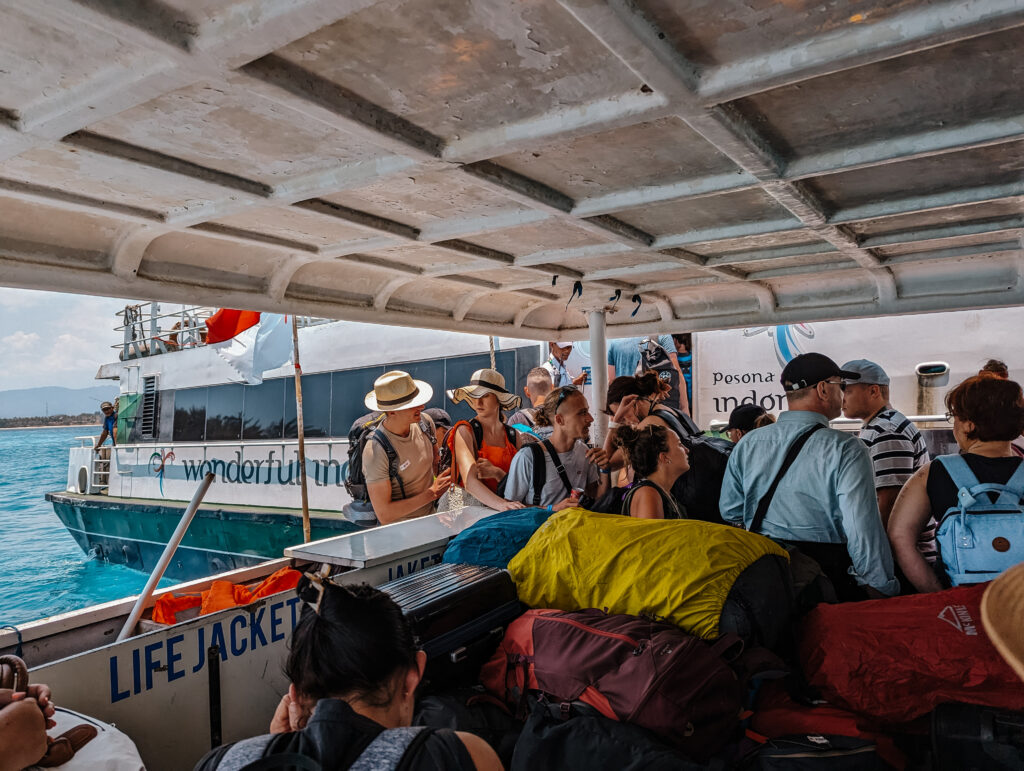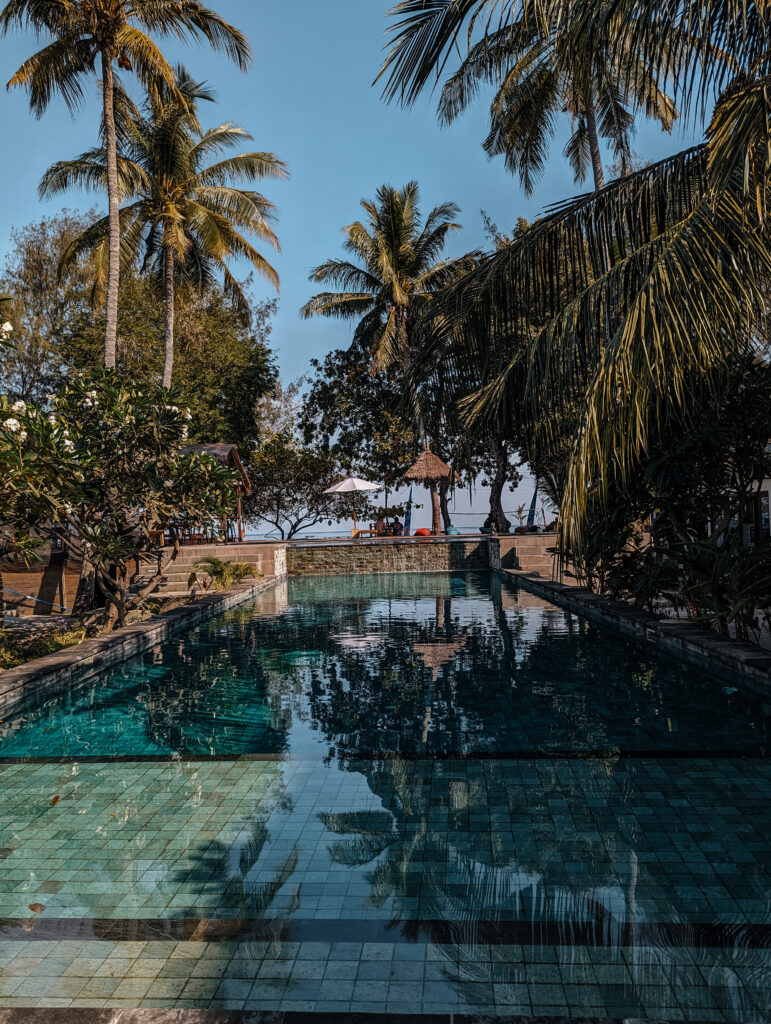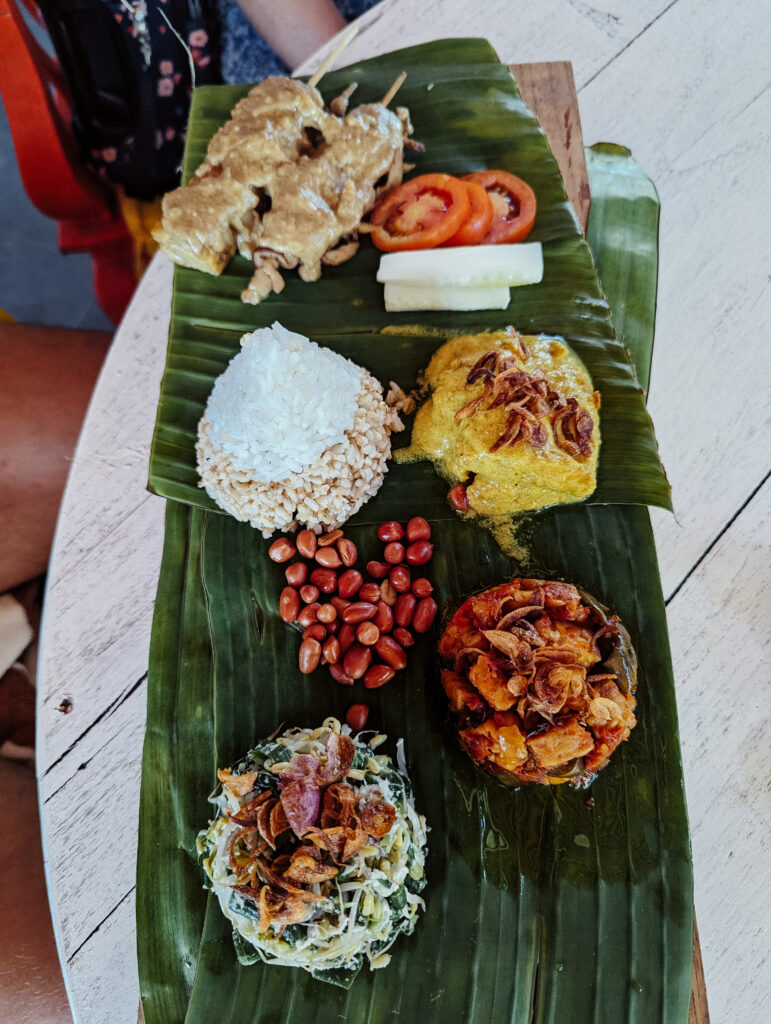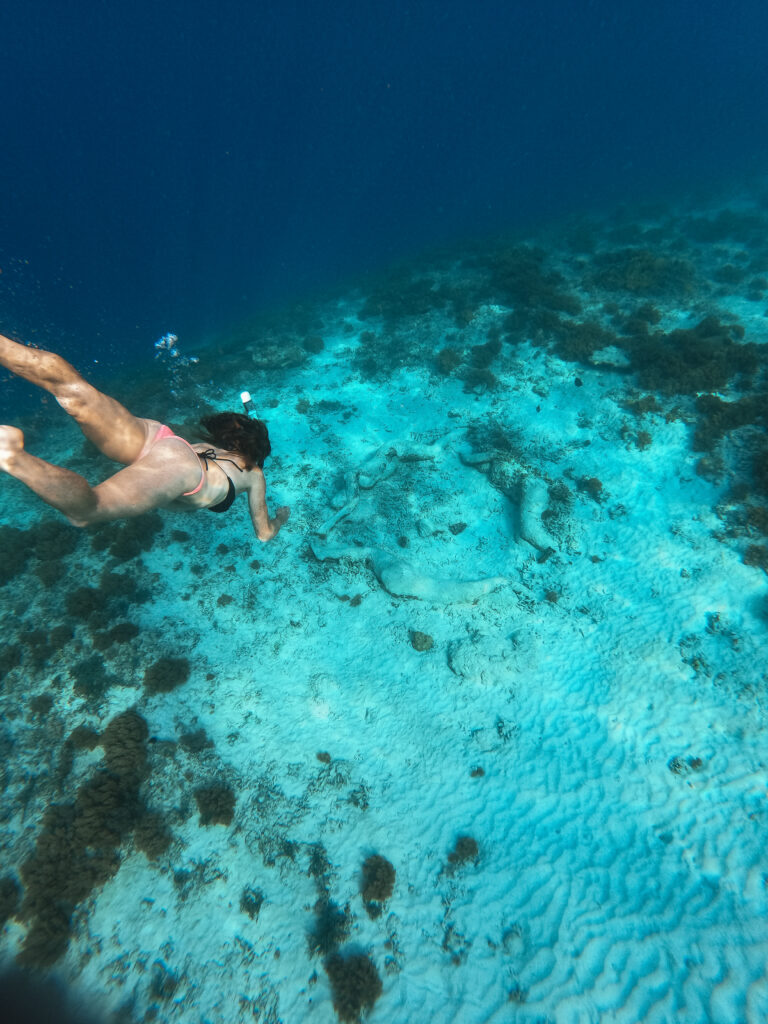Three gorgeous little islands, collectively known as Gili Indah, sit just off the coast of Lombok. Gili Air is the closest to this larger Indonesian island and is known for its great snorkeling, beautiful beaches, and good mix of tranquility with variety of activities and amenities. I’ve been visiting the Gili Islands since I was a kid and absolutely loved staying on Gili Air during our last trip to Indonesia. Here’s a brief Gili Air guide to help you plan a visit to this slice of paradise!


When to Visit Gili Air
When you visit Gili Air will play a role in your experience. You will find warm beach temperatures year-round, averaging around the high 20s°C (80s°F)!
May through September is the dry season. Days are sunnier and rain is less frequent, which also leads to a bit less humidity. During this time, the sea is usually cooler and calmer, which is great for snorkeling and diving. July and August are considered peak months, where the islands are most crowded and prices are highest.
October through April is the rainy season with the most rain falling December to February. Rainy season days are more overcast and humid. The seas are rougher, so keep that in mind when traveling by boat between islands. However, during this time, the Gilis are much quieter and prices are lower. We visited in early October, kind of the shoulder between wet and dry season, but didn’t experience a single day of rain.
In general, we’d recommend avoiding major holidays if you’re not a fan of crowds. In addition to the peak months mentioned above, prices during holidays are also higher. Consider the local holidays in addition to the holidays tourists commonly travel during (like Christmas). Much of the local population is Muslim, and during Ramadan, note that businesses may have more limited hours. Eid al-Fitr marks the end of Ramadan and the island will be quite busy during the celebrations. Nyepi, a Hindu holiday observed in Bali, also leads to many tourists heading from Bali to the Gilis when much of Bali is shut down.

Getting to Gili Air
There is no airport on Gili Air. To reach the Gilis, you must take a boat from Lombok, Nusa Penida, Bali, or another Gili island. The boat options range from ferry, shuttle boats, and private boat hire.
There are many companies that sell ferry tickets, but we used Eka Jaya to go from Bali (Padang Bai) to Gili Air. We used a private boat to go between Gili Islands and from Gili Air to Lombok, which was a great option for the five of us since it was flexible and affordable. We just organized the private boats when we got to Gili Air. For those longer trips, we’d definitely recommend medication if you’re prone to motion sickness.
When taking boats between islands, there is sometimes a dock fee/harbor tax that you must pay in cash upon both arrival and departure at the main port areas. The fee at Gili Air is 10,000 IDR per person. We weren’t charged the fee when taking a private boat from the beach.
We’ll provide more details on Gili Island transport options in another post.

Getting Around Gili Air
There are no motorized vehicles on Gili Air. It takes only about 20 minutes to walk from the harbor to the far end of the island, so we explored on foot our whole time there.
Other transport options on the island include bike, horse carriage, and the occasional electric scooter, mostly used by locals since there aren’t scooter rental places on Gili Air. There are multiple spots around the island where you can rent a bicycle for just a day or for the duration of your stay.

Local residents use horse carriages to transport goods around the island. With the growth in tourism, they have also become popular to shuttle tourists around. There’s a lot of information about the unhealthy working conditions of these horses and some of the efforts that have more recently gone into striving for their improved welfare. Do your research and use your best judgement. Even with our large bags, the walk from the port to our hotel on the further end of the island wasn’t bad at all. But if you don’t want to walk far with bags and don’t want to use a carriage, consider staying closer to the port area.

When exploring the island at night, know that many streets are not lit. We just used our phone flashlights, but you could also bring a regular flashlight or headlamp if desired.
Where to Stay
Gili Air has a range of accommodation, from simple hotel rooms to private bungalows and resorts. Below are a few great options.
Budget:
- Adinda Bungalows: Private bungalows with breakfast options available
- Kaktus Bungalows 1, 2, 3, and 4: Private bungalows
- Melbao Homestay: Double rooms with private bathrooms and included breakfast
- Ananda B&B: Double rooms with private bathrooms and cottages with included breakfast
Mid-Range:
- Blue Marlin: King and twin rooms with private bathrooms and included breakfast. All five of us stayed here and loved it! The staff were incredibly helpful with organizing tours, boat transport, paddle board rentals, and providing general info.
- Gili Air Escape: Private bungalows with included breakfast. Adults only
- PinkCoco Resort: King rooms to 2-bedroom villas and included breakfast. Adults only
- Mowie’s: Studios and bungalows with private bathrooms and breakfast options available
High End:
- Villa Kayu: 2-bedroom villa with equipped kitchen, private pool, and included breakfast
- Kalyana Villa: 1-bedroom villas and family rooms with equipped kitchens, private pools, and breakfast options available
- Villa Tokay: Villas with private pools, equipped kitchens, and included breakfast
- The Beach Shack: 2-bedroom villa with an equipped kitchen and pool


Where to Eat
We love Indonesian cuisine, and here in the Gilis, you’ll get a blend of local Sasak dishes and some really fresh seafood. If you are vegetarian or vegan, there are also various places that have options to suit your needs and some places that serve only vegetarian cuisine, like Ra Healing Food.
There are many great places to grab a bite around Gili Air. As you walk along the coast, there are many beachfront restaurants with tables out on the sand and menus displaying their dishes and fresh catches out front. Many of these places also offer happy hour deals. Head to the west side of the island in the evening to enjoy a tasty dinner or drink while watching a gorgeous sunset!


Both along the beach and down the inland streets, you’ll come across many warungs, which are perfect spots to grab anything from a fresh smoothie to local dishes for an awesome deal. A few great options include zZz Warung, Warung Sasak, and Orange’s Warung. Other great restaurants to try local dishes include Optimiz Prime, Aura Bowls, and Shendy’s Café.
You can also find a variety of international cuisines, like pizza from UNA or Mama Pizza, Makan La Vie for French-inspired cuisine, PJ’s for burgers, Keisha for sushi, and PinkCoco or Mowie’s for a variety of dishes.
Additionally, there are many cafés where you can grab a coffee, smoothie, ice cream, and some quick bites.
Many of the restaurants around the island have limited seating. So if you’re visiting during peak season or meal time and are really wanting to try a specific place, see if you can make a reservation or have a little flexibility if you need to wait for a table to open up.


Groceries
There are no major grocery stores on Gili Air. If you want to buy sunscreen, water, beer, snacks, fruit, or other basic food items, there are various little shops around the island. If you need specific toiletry items or food items, it’s better to purchase them when in Bali, Lombok, etc. as there’s no guarantee you can purchase them here.
Tours
There are many activities on Gili Air that can be done without a tour, such as snorkeling, paddle boarding, visiting the shops, etc. You can rent snorkeling gear, kayaks, and SUPs to go out on your own. But there are also tons of tour options around the island for diving excursions, snorkeling at the Nest, cooking classes, etc.

Many companies have their information online if you’d like to book in advance or have any questions. Some hotels also offer these services or can arrange them with a recommended partner. If you have a specific date, time, and company in mind, it’s worth inquiring and potentially booking in advance, particularly for dives or activities with less availability, like cooking classes.
However, if you’d rather wait to see how the weather is, aren’t sure of exactly what you want to do on what day, etc., you can often book things upon arrival. We rented paddle boards, organized a snorkeling excursion, and hired boats upon arrival through providers recommended by Blue Marlin, where we were staying.
Check out our post on things to do in the Gili Islands!
Money
Some restaurants, shops, hotels, tour companies, etc. accept card payments. Others only accept cash, may have a minimum amount to be able to use card, or may tack on extra card fees. So we definitely recommend having cash on hand.
You can exchange currencies at some hotels and exchange kiosks, but you’ll generally get better rates in Bali or Lombok, so we recommend exchanging to Rupiah before arriving in the Gilis.
There are a few ATMs around the island where you can withdraw cash if needed. They don’t always work, some run out of money, and the amounts you can take out vary. Be aware that some charge a wild exchange rate, so be sure select the option that doesn’t result in converting your bank’s default currency to Rupiah.
Like this Post? Pin it!





